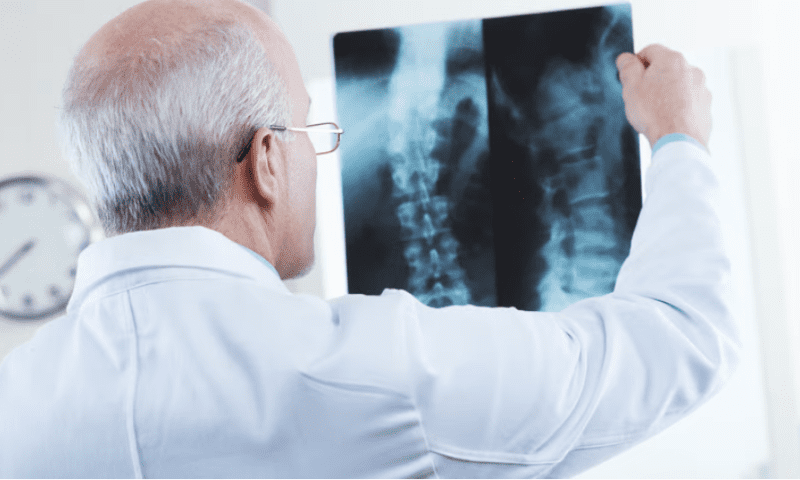While many minor or moderate spinal cord injuries, or SCIs, can be at least partially healed with physical therapy, there are no treatments for the most severe cases. The problem lies in reconnecting axon fibers—the sections of nerve cells that carry signals from the brain along the spinal cord—below and above the injury site. Axon fibers have no natural regenerative response, and the parts of the cells that would normally promote growth, called the growth cones, collapse if the fiber is damaged.
Now, a research team led by scientists from Imperial College London has successfully stimulated axon fiber regeneration in mice with severe spinal cord damage. While the mice weren’t able to walk better—unlike in earlier experiments that tested the same molecule at a different time point in mice and rats with less severe SCI—it is a step forward in understanding and potentially developing therapies for patients with devastating injuries.
Axon fibers have no natural regenerative response. The parts of the cells that would normally promote growth, called the growth cones, collapse if the fiber is damaged. So the Imperial College London team had been looking for other ways to stimulate axon fiber growth. One potential path appears to be epigenetic modifications to genes involved in cell regeneration, as they demonstrated in a paper published Sept. 20 in PLOS Biology. Using a small-molecule epigenetic activator called TTK21, they were able to improve several dimensions of spinal axon growth in mice with severe SCI.
The researchers were building upon their previous work on TTK21 and the enzyme it activates, histone acetyl transferase p300/CBP-associated factor, or PCAF. They saw in their earlier studies that TTK21 upregulated the expression of PCAF regeneration genes, increased axon fiber regeneration and improved function in mice and rats with moderate spinal cord damage when given six or 12 hours after being injured. They also saw that improvements were more profound if the rodents were housed in an enriched environment, or one with large cages, running wheels and toys, a parallel to humans undergoing physical therapy.
This time, they wanted to see whether using TTK21 in mice with severe, chronic SCI would improve their outcomes, too. To that end, beginning 12 weeks after their injury, they injected a severely injured group of mice with TTK21 once a week for 10 weeks. Both the experimental and control groups were kept in enriched environments.
At the end of the experiment, the team looked for signs of improvement. Unlike the rodents in the researchers’ earlier work, the mice weren’t able to walk better, suggesting that the TTK21 injections weren’t sufficient to improve neurological activity. But they did have new growth of motor axon fibers as well as fibers within the dorsal root ganglion, clusters of cell bodies along the spine that communicate sensory information between the central nervous system and the peripheral nervous system. Immunofluorescence experiments showed the expression of genes involved with regeneration.
Even though the mice didn’t regain function, the fact that there was any growth at all came as a surprise to co-corresponding author Simone Di Giovanni, M.D., Ph.D., who heads the neuroscience division at Imperial College London. “I did not expect to see such a clear effect on growth at such a late time after injury,” he told Fierce Biotech Research in an email.
The research team is now looking to bridge the gap—quite literally—with stem cell grafts, biomaterials or a mix of the two along with injections of TTK21.
Other innovations to treat SCI have also shown promise in recent years. Last November, scientists from Northwestern University reported that they had successfully restored mobility in mice by injecting a pair of peptides designed to form nanofibers that were similar to the spinal cord’s extracellular matrix.

